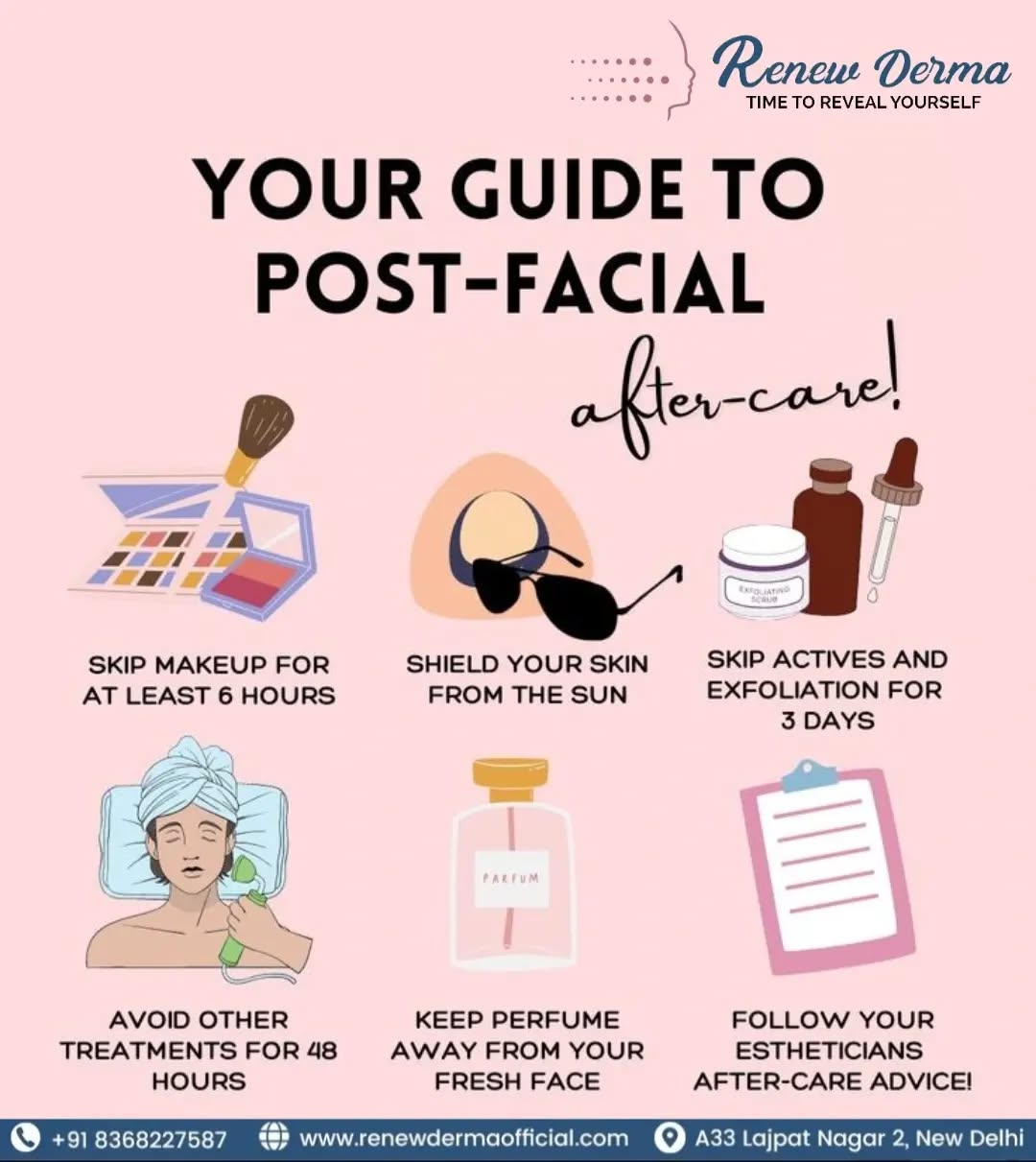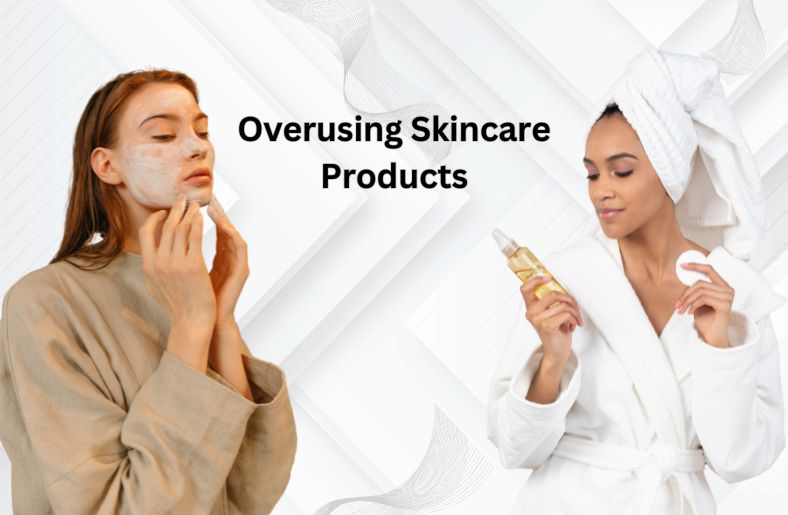Skincare treatments like dermal fillers, chemical peels, and laser therapies are transformative tools to achieve radiant, youthful skin. But did you know that improper aftercare can reduce their effectiveness or even lead to complications? This guide reveals five common mistakes people make post-treatment and provides actionable tips to help you maintain glowing, healthy skin for longer.
Failing to follow up with proper care after the procedure can reduce its positive results and potentially cause harmful side effects. This article will explore the most common errors individuals commit following skincare procedures and provide practical tips on preventing them.
Common Skincare Treatment Errors That Individuals Make
Here are the five common skincare treatment errors that most individuals make after the treatment:
Error 1: Ignoring the Importance of Aftercare Instructions

Post-treatment instructions from your skincare specialist are designed to help your skin heal and enhance your results. Ignoring them or making personal adjustments—like skipping a step or using unapproved products—can lead to irritation, delayed recovery, or even skin infections. For example, using makeup too soon after dermal fillers could block pores, causing redness or bumps.
What to Do Instead?
Ensure that you prioritise following your provider’s aftercare instructions accurately. This could involve abstaining from specific products, activities, or surroundings like saunas or steam rooms for a designated time. If you have doubts about a particular step, contact your skincare specialist.
Pro Tip: Create an essential list of the steps you must follow for your aftercare to help you stay on schedule. For those who have undergone dermal fillers, for instance, ensuring the best results requires proper dermal fillers aftercare, like avoiding makeup for the first 24 hours and staying hydrated to support skin elasticity.
Error 2: Resuming Exercise Too Soon

Exercise is essential for your health, but skipping workouts for 48 hours post-treatment is equally important. Activities like running or weightlifting increase blood flow, potentially worsening swelling or bruising around treated areas. For instance, microneedling patients who return to the gym too quickly often report prolonged redness and irritation. This is particularly vital for treatments that require needles or lasers, such as dermal fillers or microneedling.
It’s advisable to refrain from intense physical activity for a minimum of 48 hours after dermal filler injections to lower the chances of bruising and infection. Vigorous exercise can worsen swelling by increasing blood flow around the injected areas.
What to Do Instead?
Allow your skin to adjust. Several skincare experts advise waiting a minimum of 24-28 hours before engaging in intense physical activities again. This period allows your skin to heal without the added strain of physical activity.
Pro Tip: If you want to stay active, take advantage of this short pause to dedicate some time to gentle stretching or other easy activities on your body. It is generally okay to take light walks but speak with your provider if you have any questions.
Error 3: Exposing Skin to Sun and Heat

Post-treatment skin is highly sensitive to environmental stressors. Direct sunlight or heat exposure can worsen redness, increase inflammation, and even lead to hyperpigmentation. For example, patients recovering from laser treatments often find that sunscreen alone isn’t enough—protective clothing like hats and staying indoors during peak hours make a big difference.
This is important for laser treatments or chemical peels, as they temporarily eliminate or change the skin’s top layer, making it more apt to sun damage. Sun exposure is the primary cause of skin ageing and is responsible for approximately 90% of visible changes, such as wrinkles, pigmentation, and reduced elasticity.
What to Do Instead?
Try to stay out of direct sunlight as much as possible and use sunscreen with SPF 30 or above at all times. Use it every two hours outside, even if the weather is overcast. During the initial weeks after treatment, it is recommended to stay in the shade, put on a wide-brimmed hat, and use various sun protection methods whenever possible.
Pro Tip: Cooling your skin post-treatment can aid in preventing inflammation caused by heat exposure. Consider using a calming gel or cold compress to help soothe your skin, especially if you see any redness or swelling.
Error 4: Overusing Skincare Products

Sticking with your regular skincare regimen after treatment might be alluring, mainly if it includes potent ingredients like the following:
- Retinoids
- AHAs, or
- Vitamin C serums
However, overloading your skin with numerous active ingredients early on may cause irritation or excessive stimulation, which could interfere with the healing process and potentially offset the advantages of the treatment.
What to Do Instead?
During the initial week following treatment, streamline your skincare routine. Opt for mild and moisturising products that assist in healing without any active components. Give importance to gentle cleansers, moisturisers without fragrance, and enough hydration to let your skin heal undisturbed. Research has shown that moisturisers, cleansers and sunscreens are the most frequently used skincare products, with 93%, 85%, and 83% usage, respectively, underscoring the importance in self-care and health maintenance.
Pro Tip: Slowly reintegrate your regular skincare items as your skin recovers. Hold off on restarting more intense treatments like retinoids until your provider clears you, as they can usually be restarted within 7-10 days, depending on your skin type and the treatment you underwent.
Error 5: Picking, Touching, or Scratching the Skin
Sensitivity or itching is common after treatments like fillers or peels, but touching your skin introduces bacteria, increasing the risk of infection. For example, picking at scab’s post-peel can lead to scars or uneven pigmentation. Instead, use a cold compress to soothe itching without risking complications. Picking at procedures that may lead to slight scabbing or flakiness can further worsen scarring.
What to Do Instead?
Avoid touching your face and engage in healing practices without using your hands. If you experience itching or discomfort, attempt applying a cold compress or a mild, fragrance-free moisturiser to help relieve the symptoms. Refrain from applying pressure or rubbing on areas treated with needles, like dermal fillers.
Pro Tip: To reduce the tendency to touch your face, keep your hands occupied or use comfortable, loose clothing near the affected areas when necessary. Remember that each time you come in contact with healing skin, you risk spreading bacteria and hindering your recovery.
Conclusion
Aftercare isn’t just about following instructions—it’s about creating the perfect environment for your skin to heal and thrive. Avoid common mistakes like skipping aftercare steps or resuming exercise too soon. By taking small but essential steps, you’ll enjoy longer-lasting results and healthier, more radiant skin. Avoid strenuous exercise, stay out of direct sunlight, be cautious with skincare products, and do not touch your face. Doing these things creates the best environment for your skin to recover and thrive.
Investing in skincare treatments is vital for your long-term skin health. Good aftercare can help you get the most out of your treatment and keep your skin healthy and radiant for a long time. Good aftercare ensures your skin remains healthy and radiant over time.
